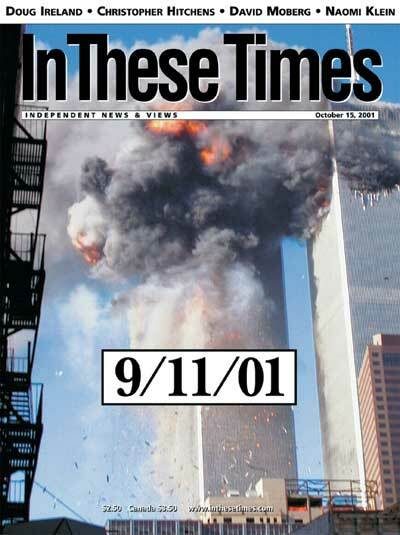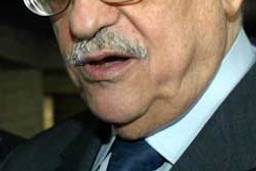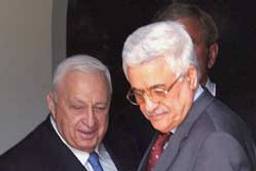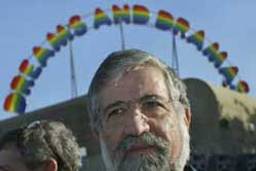Palestinians in the West Bank and Gaza Strip experienced a tinderbox of emotions as the series of hijackings and attacks struck America. Initially, some Palestinians cheered at the strike. Those images were caught on television and broadcast around the world.
But most Palestinians watched the unfolding events in horrified silence. Streets were empty as the sun set in Jerusalem. Some tried desperately to call their families in the United States, afraid of the mass anti-Arab hysteria they felt was overcoming the nation – or afraid that their relatives might no longer be alive.
“Palestinians are like any other people under the sun,” said Mahdi Abdul Hadi, 45, lighting a candle with other Palestinians in front of the American consulate. “Despite the current environment between Washington, Tel Aviv and Gaza, people are really seriously shocked to see such a catastrophe. Faceless, nameless people are hurt and no one can explain that kind of anger and frustration.”
Others said they prayed that the perpetrators would not turn out to be Arab. Minutes into the attack, international news agencies were reporting that a leftist Palestinian faction, the Democratic Front for the Liberation of Palestine, had claimed responsibility. A Palestinian reporter moaned when he saw the newscast, saying, “Oh, God. Leave us alone. Don’t we have enough problems?”
Local DFLP officials were brought in front of the cameras to deny the accusation, and analysts expressed doubt that the small group had the capacity, money or will to create such devastation. “That is impossible,” Palestinian cabinet secretary Ahmad Abdel Rahman said unequivocally when asked if Palestinians might be involved. “No Palestinian could think this way. It is not the Palestinian way to do anything this way. It is too crazy, too stupid, too blind.”
Indeed, Palestinian leader Yasser Arafat was among the first world leaders to publicly condemn the many deaths and express his condolences for the loss of life. Denials of responsibility followed quickly from both Hamas and Islamic Jihad, organizations that have used suicide attacks against Israelis in their strategy of fighting the Israeli occupation.
So why then, were Palestinians pictured celebrating in Jerusalem, in Nablus and in the Palestinian refugee camps in Lebanon? “After the 1967 aggression against the Arabs, the American people in 17 major cities took to the streets, celebrating Israel’s victory,” remembers Faisel Abu Kishlik, a man in his fifties.
That war was when Israel occupied the West Bank and Gaza Strip, defeating the Arabs and taking the land that Palestinians now seek as their state. It was the second time that Palestinians had been made refugees by Israel and it was the second, but not the last, time that the United States sided with Israel over the Palestinian population.
“It is time for the American people to see that we are under occupation here in Palestine and what we need is to live in peace and to have our own state,” says Kishlik, a graduate of City College in New York. “We want to remind the American people that what they suffered yesterday, we suffer daily. American warplanes and American missiles are used on [Palestinian] police stations and schools and civilians. We appeal to the American people to do something about it.” And while the vast majority of Palestinians resent U.S. support of Israel, none are celebrating the damage caused by not-yet-proven allegations that this attack was crafted by Arab hands. Local Palestinian media reported a slew of death threats and angry letters sent from abroad via e-mail.
The Palestinian Authority spent much of Wednesday doing damage control, repeatedly condemning the attacks and offering help in finding the perpetrators. In a press release sent out that day, the Palestinian leadership said it was alarmed at the “almost overt jubilation of some Israeli politicians and official figures at what they consider a vindication of their stand,” i.e., that Israeli efforts to squelch the Palestinian uprising are part of the fight against terrorism. Former Israeli Prime Minister Ehud Barak could be heard on several television channels asking Americans to work with Israel in the fight against terror.
Under cover of the media focus on New York and Washington, Israeli forces entered the West Bank town of Jenin on Tuesday evening. Battles between Palestinian fighters and Israeli tanks, F-16 warplanes and paratroopers had left some 12 Palestinians dead, including a 9-year-old girl. Israeli officials said the invasion was necessary to clear out the “nest of terrorists” in the town after a Palestinian man with Israeli citizenship allegedly trained in Jenin blew up himself and three Israelis in the Israeli town of Nahariyya.
Perhaps the most strident Palestinian emotion was that of fear and uncertainty. “The world is totally different than yesterday,” Abdel Hadi says. “We don’t trust anyone anymore. We don’t believe in anyone anymore. And one is even doubtful of oneself.”








